Asbestos, a term that often brings to mind safety warnings and health risks, is a topic of significant concern for many. In this blog we will explore what asbestos is, its health effects, the different types of asbestos, and practical advice for dealing with asbestos-related issues.
What is Asbestos and What Causes It?
Asbestos refers to a group of naturally occurring fibrous minerals known for their durability, fire resistance, and insulating properties. These minerals form in the earth through a process of serpentinization (a metamorphic transformation of primary minerals), where certain rock types are altered by heat and pressure, leading to the formation of asbestos fibers. These fibers are strong and flexible enough to be woven and are resistant to chemicals, heat, and electricity, making them a once-popular choice in building materials.
Asbestos in Simple Words
Simply put, asbestos is a natural mineral that can be pulled into a fluffy consistency. Asbestos fibers are soft and flexible yet resistant to heat, electricity, and chemical corrosion. Pure asbestos is an effective insulator and can be mixed into cloth, paper, cement, plastic, and other materials to make them stronger.
Health Effects of Asbestos
Exposure to asbestos can have severe health implications. When asbestos fibers are released into the air and inhaled, they can cause lung disease, lung cancer, and mesothelioma, a rare form of cancer primarily associated with asbestos exposure. The International Agency for Research on Cancer has classified asbestos as a known human carcinogen.
Asbestos-related diseases often take a long time to develop but once diagnosed, they can be aggressive and often fatal. This is why it's crucial to protect workers and family members from exposure to asbestos, especially in environments where asbestos-containing materials are present.
Products That Still Contain Asbestos
Despite its known hazards, asbestos is still found in various products, particularly in older buildings. Some common products that may still contain asbestos include:
- Floor tiles: Asbestos was often used in vinyl and asphalt floor tiles for its durability.
- Asbestos insulation: Used for its fire-resistant properties in walls and attics.
- Roofing and siding materials: For their strength and resistance to fire.
Different Colours and Types of Asbestos
Asbestos comes in several forms, each distinguished by its color and fiber type:
- Chrysotile Asbestos (White Asbestos): The most common type of asbestos in buildings. It's found in roofs, ceilings, walls, and floors of homes and businesses.
- Amosite Asbestos (Brown Asbestos): Often used in cement sheets and pipe insulation.
- Crocidolite Asbestos (Blue Asbestos): Used in steam engines, pipe insulation, and some spray-on coatings.
Each type has its own level of hazard, but all are harmful to human health when fibers are inhaled.
Asbestos Cement's Colour
Asbestos cement, commonly used in building materials, usually appears in a greyish color, resembling regular cement. It was widely used due to its durability and fire-resistant properties.
Asbestos in Building Materials: A Focus for Property Owners
In the United States and globally, asbestos was extensively used in a variety of building materials. For property owners, especially those with older buildings, it's crucial to be aware of where asbestos might be present. Asbestos-containing materials (ACMs) can be found in:
- Insulation materials in walls and attics
- Vinyl floor tiles and the backing on vinyl sheet flooring
- Roofing and siding shingles
- Textured paint and patching compounds used on wall and ceiling joints
If you suspect that your property contains asbestos, it's important not to disturb it, as this can release asbestos fibers into the air. Professional assessment and removal are recommended.
Dealing with Asbestos-Related Property Damage
Property damage involving asbestos can be complex. If asbestos materials are damaged, they can expose workers and family members to harmful fibers. In cases of property renovation or damage repair, it's vital to employ professionals who are trained in handling asbestos safely. They can ensure that asbestos is contained and removed without causing further exposure.
Making an Insurance Claim for Asbestos-Related Issues
If you need to make an insurance claim related to asbestos, understanding the process is crucial:
- Documentation: Gather all necessary documents proving the presence of asbestos and the damage it has caused.
- Professional Assessment: Have a professional assess the extent of the damage and the potential costs involved in removal or repair.
- Insurance Policy Review: Understand your insurance policy's terms regarding asbestos. Some policies may have exclusions or limitations related to asbestos removal or damage.
Keep in mind that dealing with asbestos-related claims can be a complex process, requiring specialized knowledge and understanding of both the health risks involved and the legal implications.
Conclusion
Asbestos, once a popular building material, now poses significant health and property risks. Understanding the different types of asbestos, their health effects, and how to manage asbestos-containing materials is essential for property owners, workers, and researchers. If you're dealing with asbestos in your property, it's important to approach the situation with caution and seek professional help, especially when making insurance claims for asbestos-related damage.
Remember, the health effects of asbestos exposure are severe and can take years to manifest. Protecting yourself, your workers, and your family members from exposure is paramount. Stay informed, stay safe, and take the necessary steps to handle asbestos responsibly.





